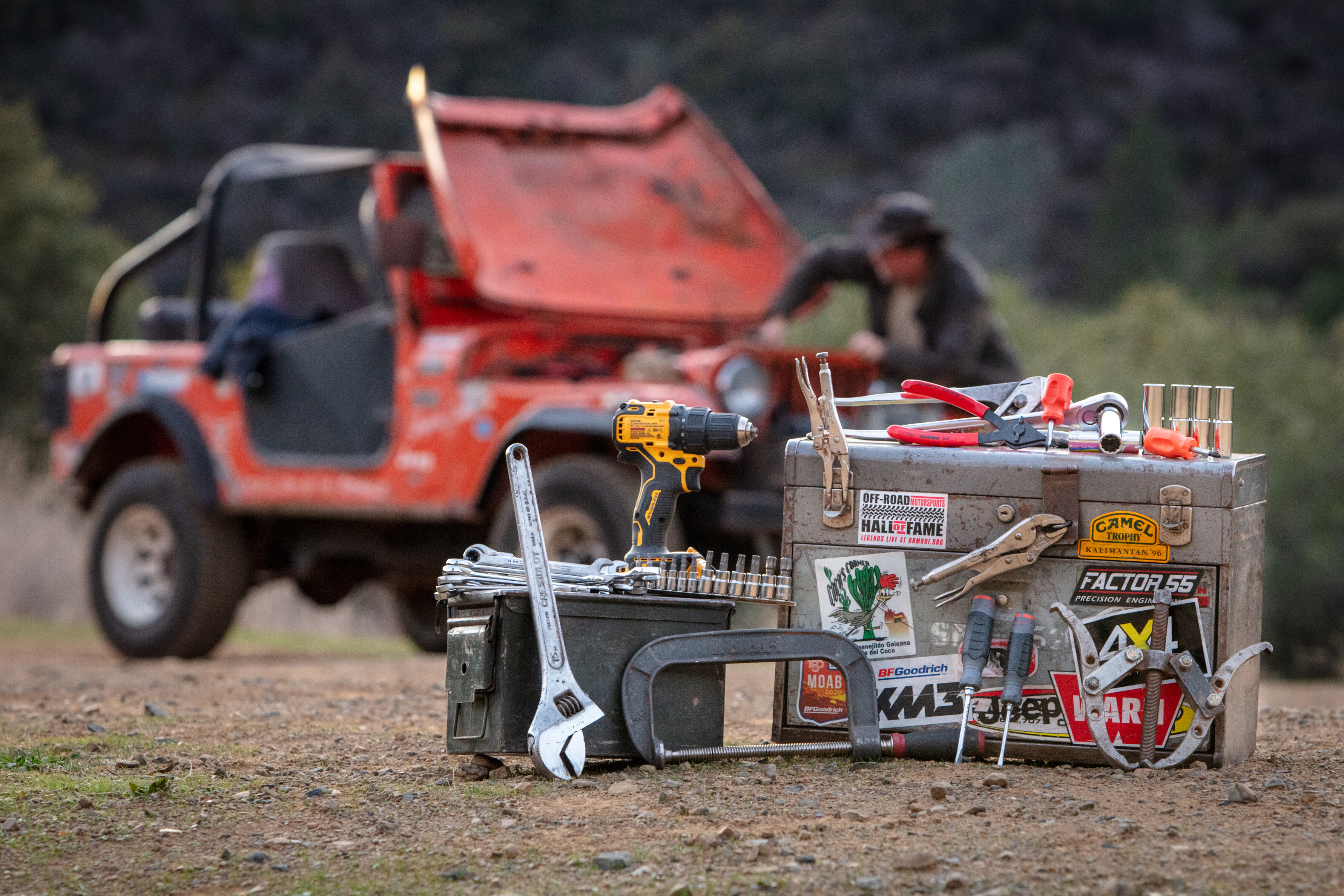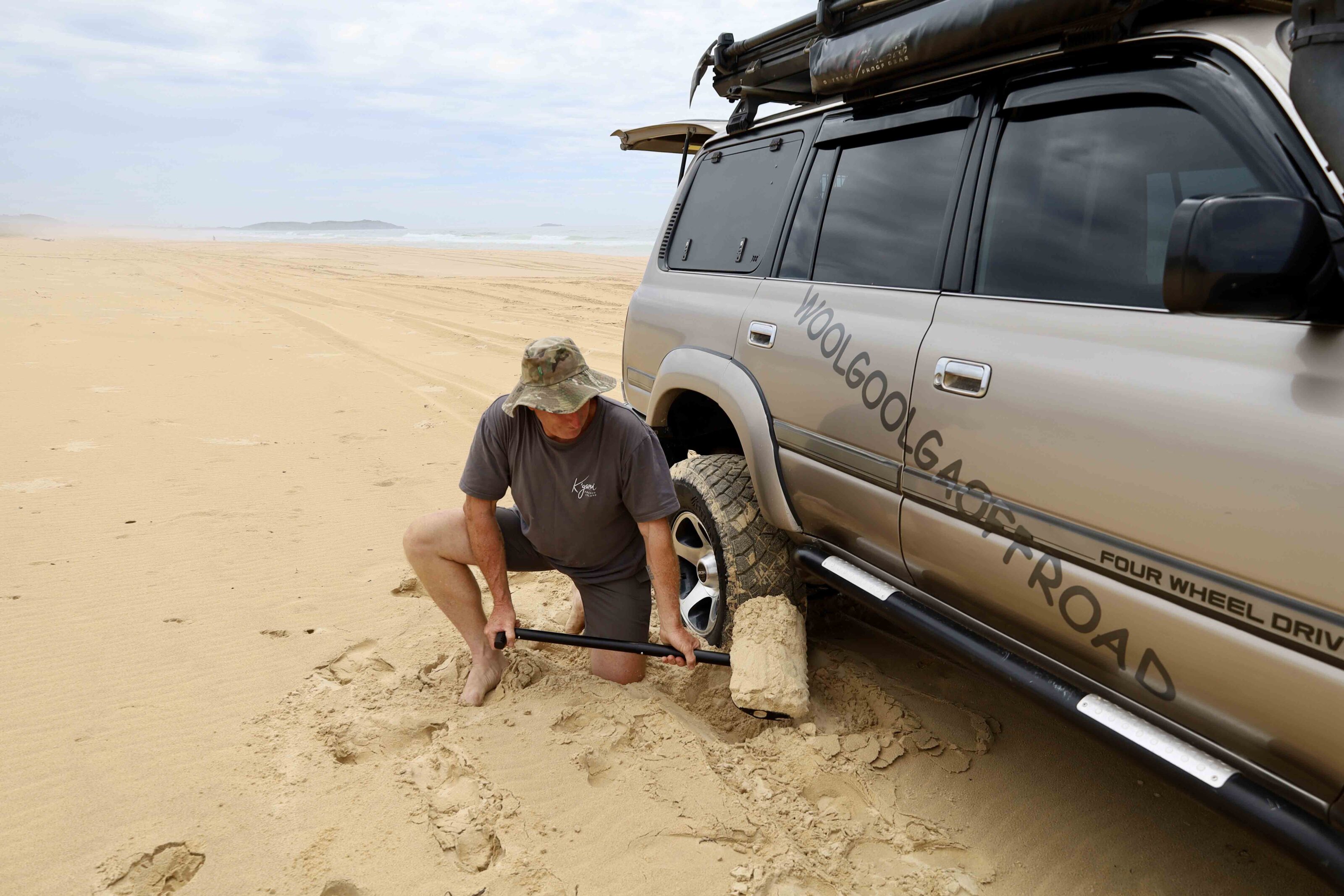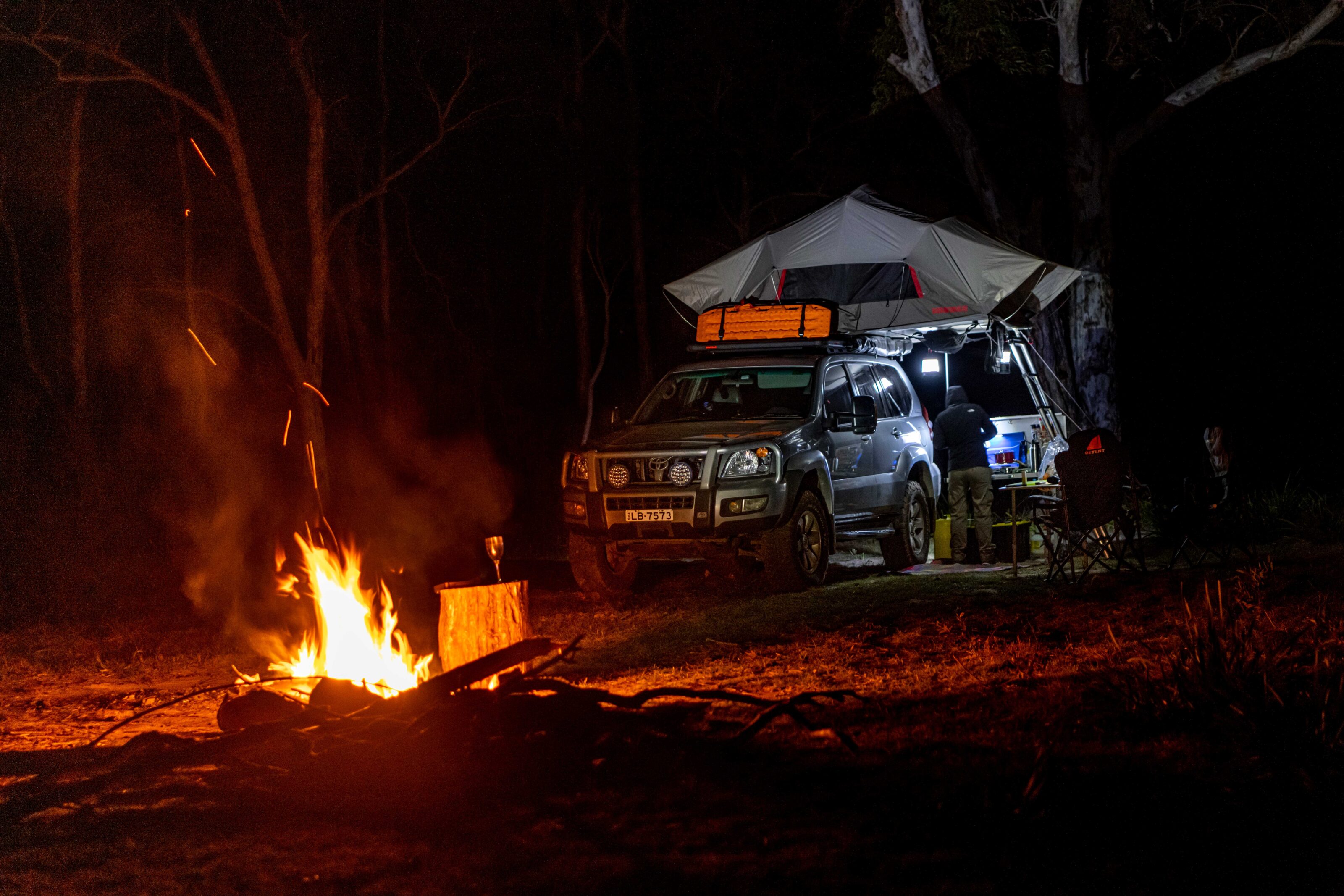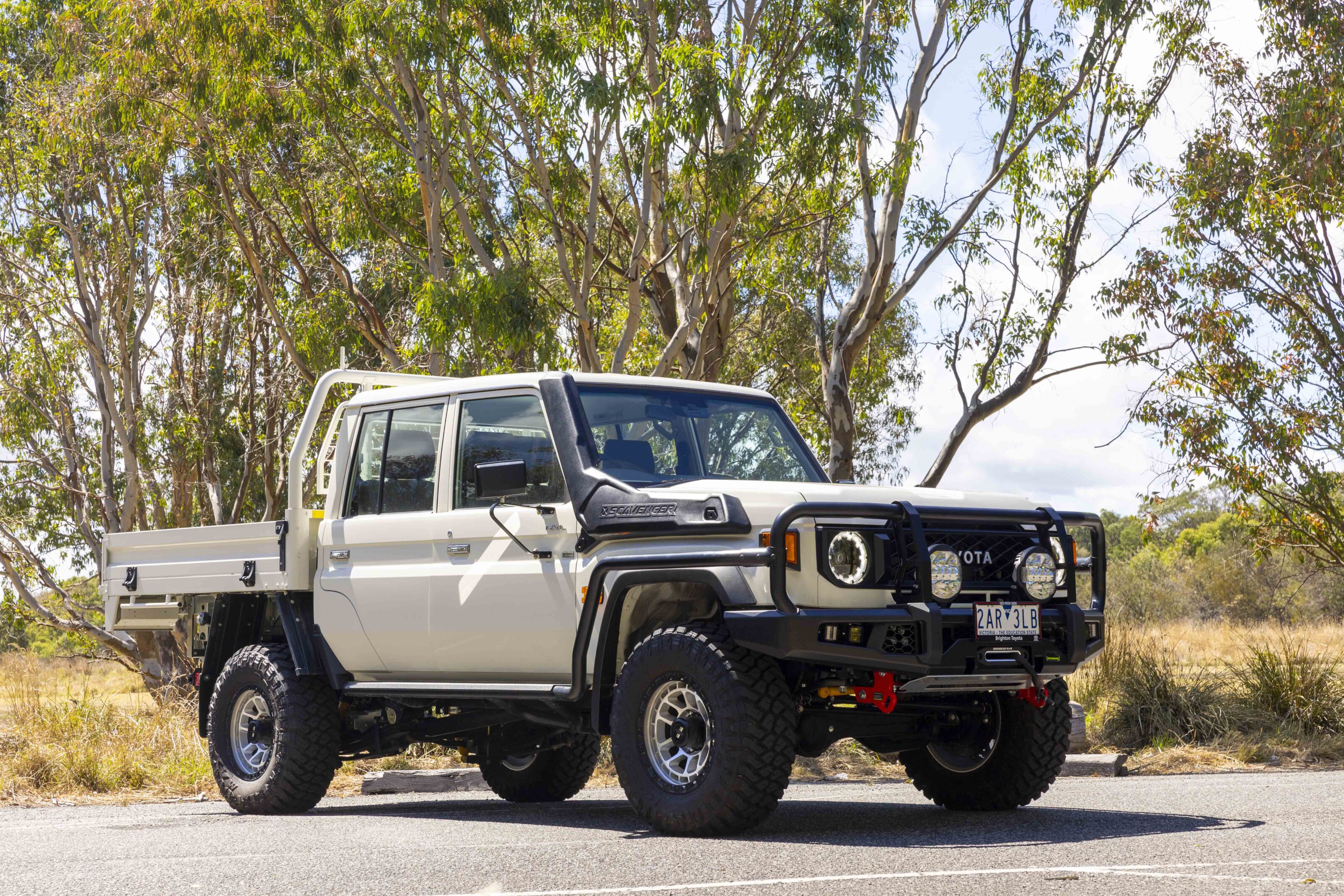In January of 1999, I found myself in the remote heights of the Peruvian Andes behind the wheel of a waning Jeep CJ7. Pulling long grades over 15,000-foot passes, it had been running hot and developed a vapor lock.
We were tail gunner for a group of five vehicles, but our primary toolbox was ahead in another vehicle and we had lost comms in the twisting canyons. Alas, the only tool we had was on my belt, a trusted Leatherman multi-tool. My co-driver Brian and I got out, scratched our heads, and popped the bonnet.
I will admit that running naked (tool-wise) in an old rig ranks right up there with heading into the Simpson Desert with half a tank of fuel. However, it does raise the question of what we actually need in the bush. Let’s break it down: water, appropriate clothing, shelter and food.
A survivalist might suggest the most important piece of kit is a knife, fire starter or tarp, but when it comes to keeping our vehicles healthy, we need to expand on that doctrine. What I’ve learned over the years is, when it comes to tools, it is better to have than have not.
TOOL SELECTION
Most pro mechanics swear by US-made SK, Mac, Proto or Snap-on, but these names come with hefty price tags. Like you, I need to pick my financial battles, ponying up the big bucks for specialty tools and relying on less costly brands for the standard stuff.
Unlike back in the 1970s, there are some quality tools being manufactured in Asia. Operative word, some. I also like to honour the inventive folks that became the Xerox of a genre, as well as those that have the intestinal fortitude to keep production at home.
The following selection is representative of my existing off-road kit and broken down into categories: basic hand tools, specialty tools, and rolling fab shop. I see people carrying cordless impact guns, but it is hard to justify the additional weight and real estate when a 10-second Supercars tyre change isn’t required.
Some of these products have been provided by the manufacturer, many were pulled out of my vehicle, and others were purchased through my local tool shop. We’ve also added a special sidebar on storage options, and another on that singular tool you shouldn’t leave home without.
“What I’ve learned over the years is, when it comes to tools, it is better to have than have not”
THE BASICS
At age 17 I received my first credit card, specifically so I could buy a set of Craftsman tools. There were more expensive brands, but Craftsman was US-made, had a reputation for quality and durability, and was affordable. The operative words are quality and durability.
If you open my trail toolbox today (40 years later) you will find most are still with me and in service. Now owned by Stanley Black & Decker, much of its manufacturing was moved overseas, but the company is opening a new facility in Texas and bringing some production lines back to the US.
This set is a good place to start. It includes a comprehensive assortment of ratchets and extensions, metric and SAE deep and shallow sockets, combination wrenches, swivel joints, adapters, and sparkplug sockets. Additional items needed are longer ½-inch extensions (10- and 18-inch).
I’m a fan of using a ½-inch flex-head ratchets to access tight spaces (using a 3/8 reducer when needed), and you’ll want a high-end breaker bar for those tough buggers. This is where I open my wallet for a premium brand like Proto.
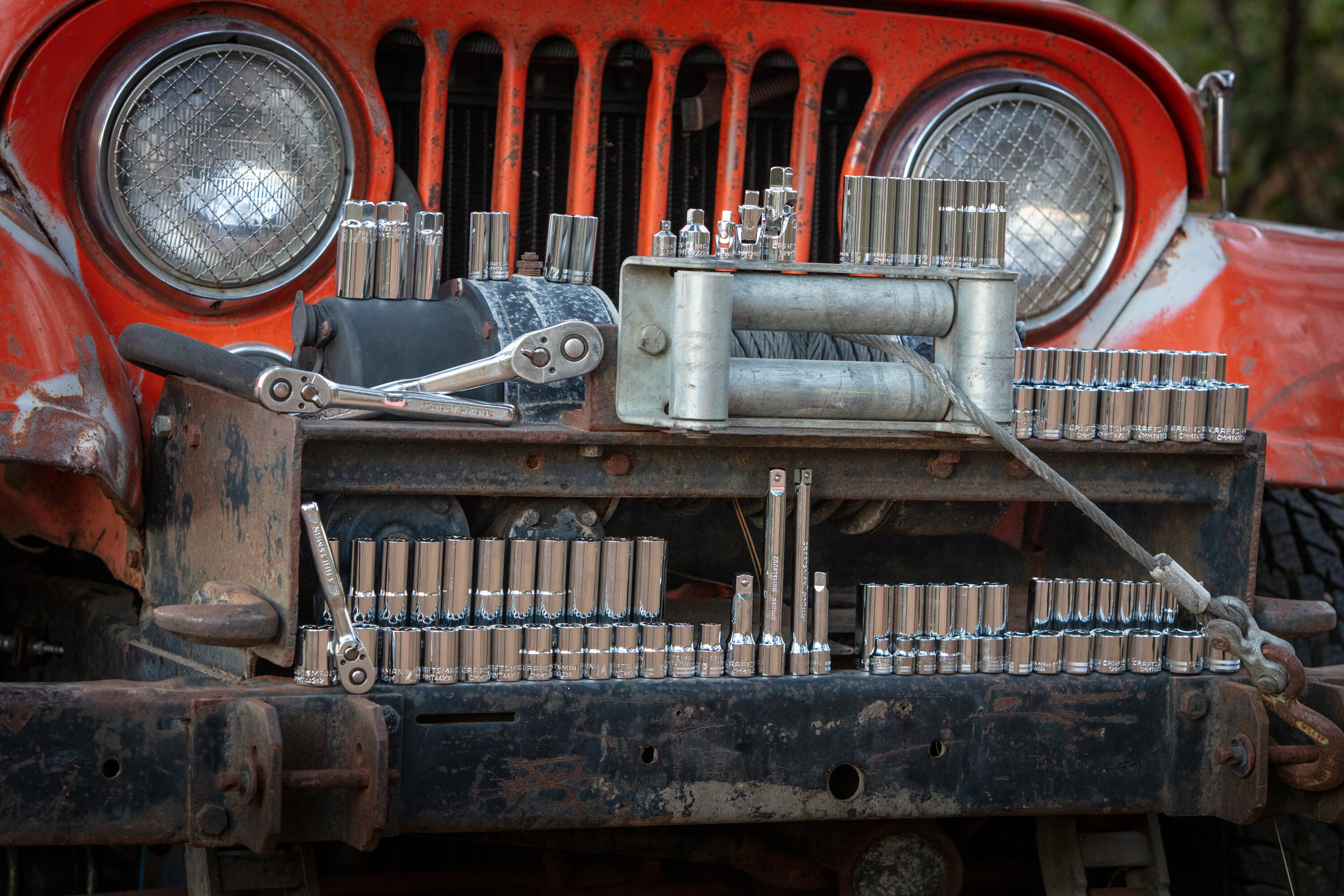
WRENCH IT
In an effort to make a better mousetrap, Gearwrench went to task to improve upon the combination wrench by adding a ratcheting feature. Nearly all other manufacturers have emulated this patented design, but Gearwrench was the original and its product is on par with any in the field.
A rounded-off brake line fitting can be a big problem, but can be avoided by using a notched box-end wrench. Determine sizes needed for your rig and pick them up at your local auto parts store for about $20.
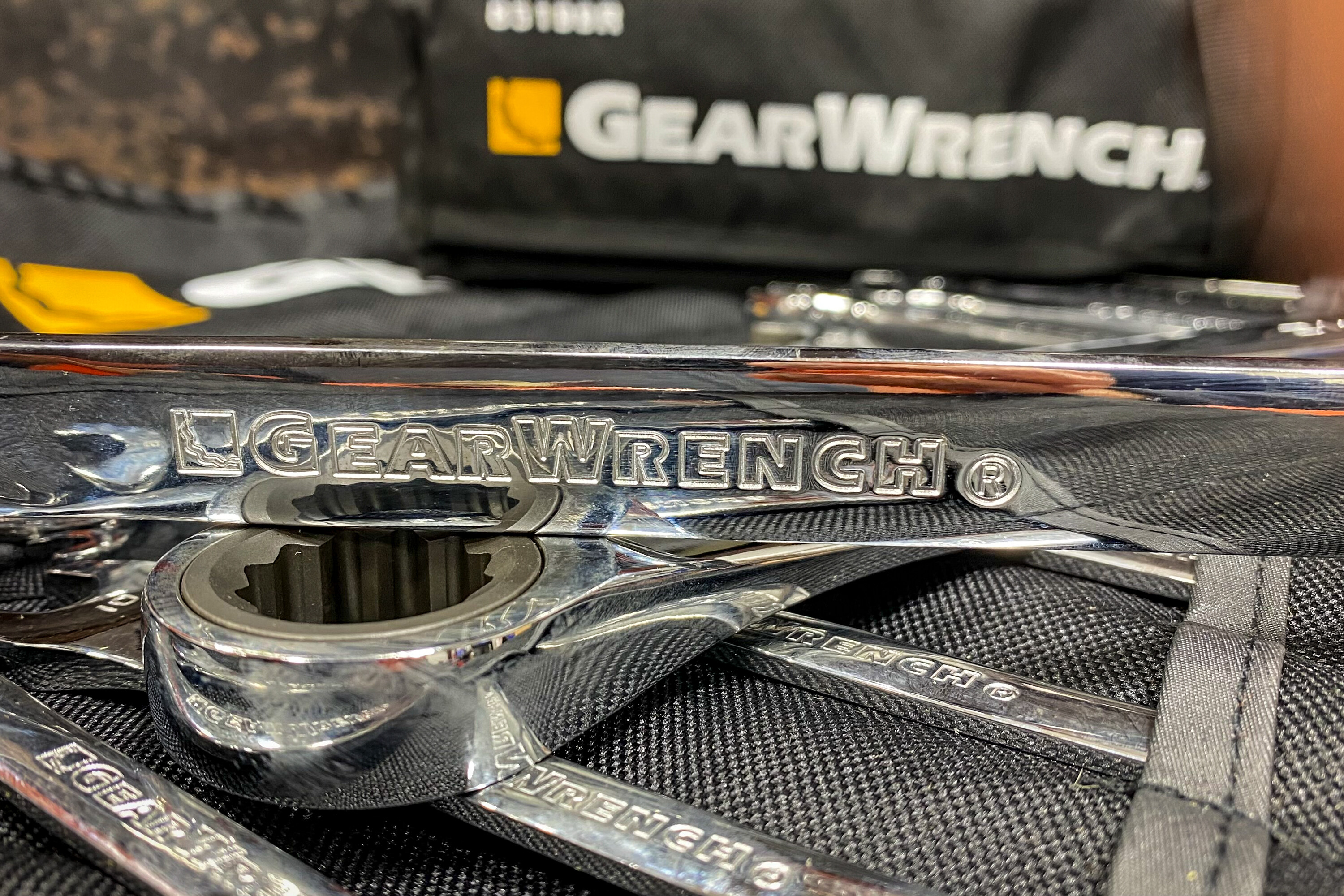
GRIP IT
Channellock, Vice-Grip, and Crescent are what you find in my toolbox. Why, because they were the originators of their genre and offer quality products. Many manufacturers offer slip-joint pliers, but the Channellock design, patented in 1934 by the Champion-DeArment Tool Company, was first on the block.
More than 80 years later it is still manufacturing tools in Meadville, Pennsylvania. Same is true for Crescent (1907 in Jamestown, New York), but most of Vice-Grip products are now made in China.
Buying tools in sets will save you some cash, but carrying all this stuff is bulky and heavy, so I cull the herd to what you see here: Vice-Grips in regular and needle nose, and Channellock’s 10-inch tongue & groove, crimpers, and needle nose pliers, and its #968 wire cutters.
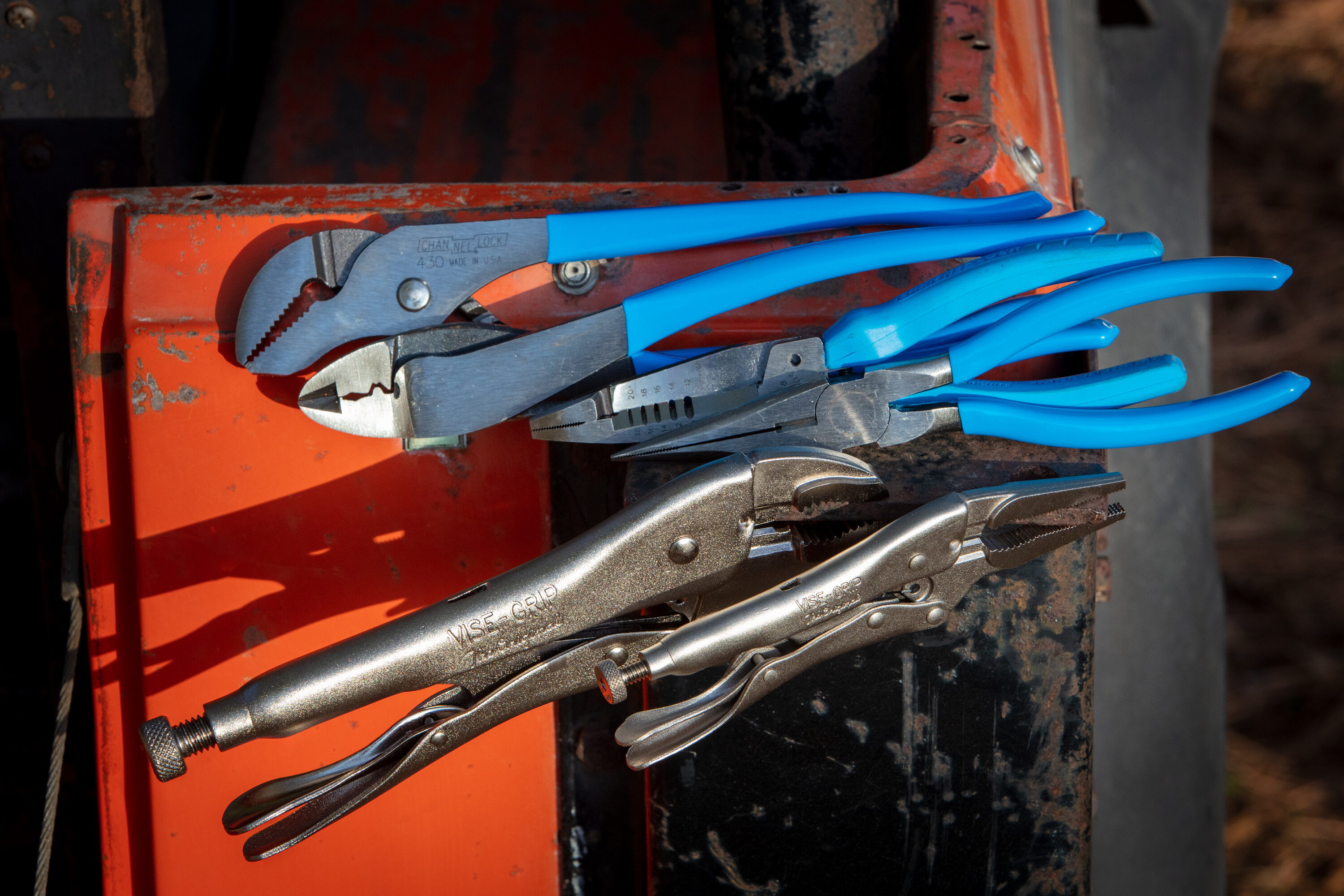
TWIST IT
The screw, as we know it, began life in the 1770s when Englishman Jesse Ramsden invented a lathe that would cut helical threads. Though rudimentary by today’s standards, developments during the Industrial Revolution made the screw affordable enough for the common craftsman. There have been many new designs over the years, but when it comes to your vehicle, odds are they will fall into Phillips, slotted, Allen, and Torx categories.
In the quest for a more efficient screw turner (an early term), the Allen Manufacturing Company patented the recessed hex head in 1910, followed by the self-centering crosshead design (cruciform slot) brought to market by Henry F. Phillips in the 1930s. The last significant addition to genre came in 1967 with the Torx, or hexalobular internal-head screw.
Bargain-brand screw turners tend to strip heads, and I’m willing to spend a bit more for screwdrivers crafted from high-alloy steel with a precision machined tip. I like Proto’s ergonomic handles, and I carry this set in each of my trail rigs.
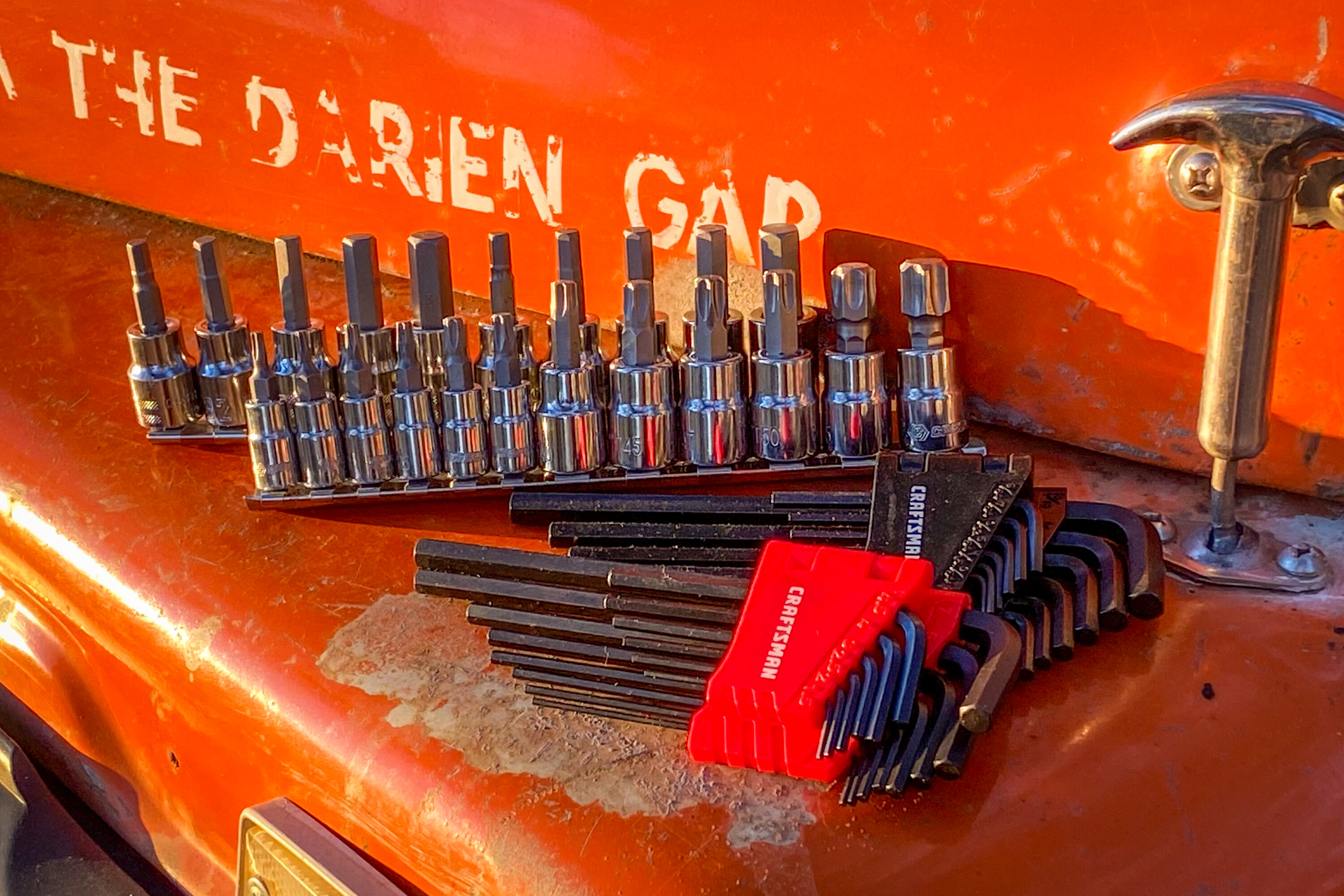
SPECIALTY TOOLS
Now that we’ve covered the basics, let’s examine the other bits that hold your rig together. Some of these may be specific to your vehicle, so do your homework and add them to your cart. I agree, piling all this stuff in your rig takes space, adds weight and comes with a price tag. However, having the right tool in-hand when things go sideways, your cell shows zero bars, and the tarmac is a day’s drive away … that’s priceless.
If you have to dismantle a transfer case, engine or axle, you are going to need retaining ring and C-clip pliers. I’ve had these Snap-on horseshoe pliers since the ’90s. They were pricy but invaluable at times. For retaining rings, I suggest a convertible set like the Proto 375, which works with internal and external rings.
This assortment of Proto chisels, punches and drifts were purchased at garage sales. They have been in my toolbox for decades, put to task countless times, and have withstood the test of time and abuse.
Miscellaneous stuff includes hole punch, dental picks, mini screwdrivers, tweezers, utility knife, cleaning brushes, and telescopic magnet and mirror. The Impeltronics telescopic magnet will hold five pounds and has an LED light on the business end. If you have an older rig with a mechanical distributor, include a set of feeler gauges and a point file. Lastly, the ClampTite will allow you to twist bailing wire into a temporary hose clamp.
Accessing front wheel bearings or a pinion seal requires a specific socket. If dismantling steering rod ends or ball joints, a pickle fork will come in handy. Determine the sizes required for your vehicle and source them at your local auto parts store. I also carry a beat-to-heck Snap-on prybar – don’t cheap out or you’ll end up with a pretzel.
An OBD II scanner should be standard issue for 1996 and newer vehicles. The Blue Driver unit and associated app will identify system problems, provide reports and live data, and clear codes. I’ve had good service from this Klein Tools MM400 multimeter, and you should also carry jumper leads and a 12-volt test light.
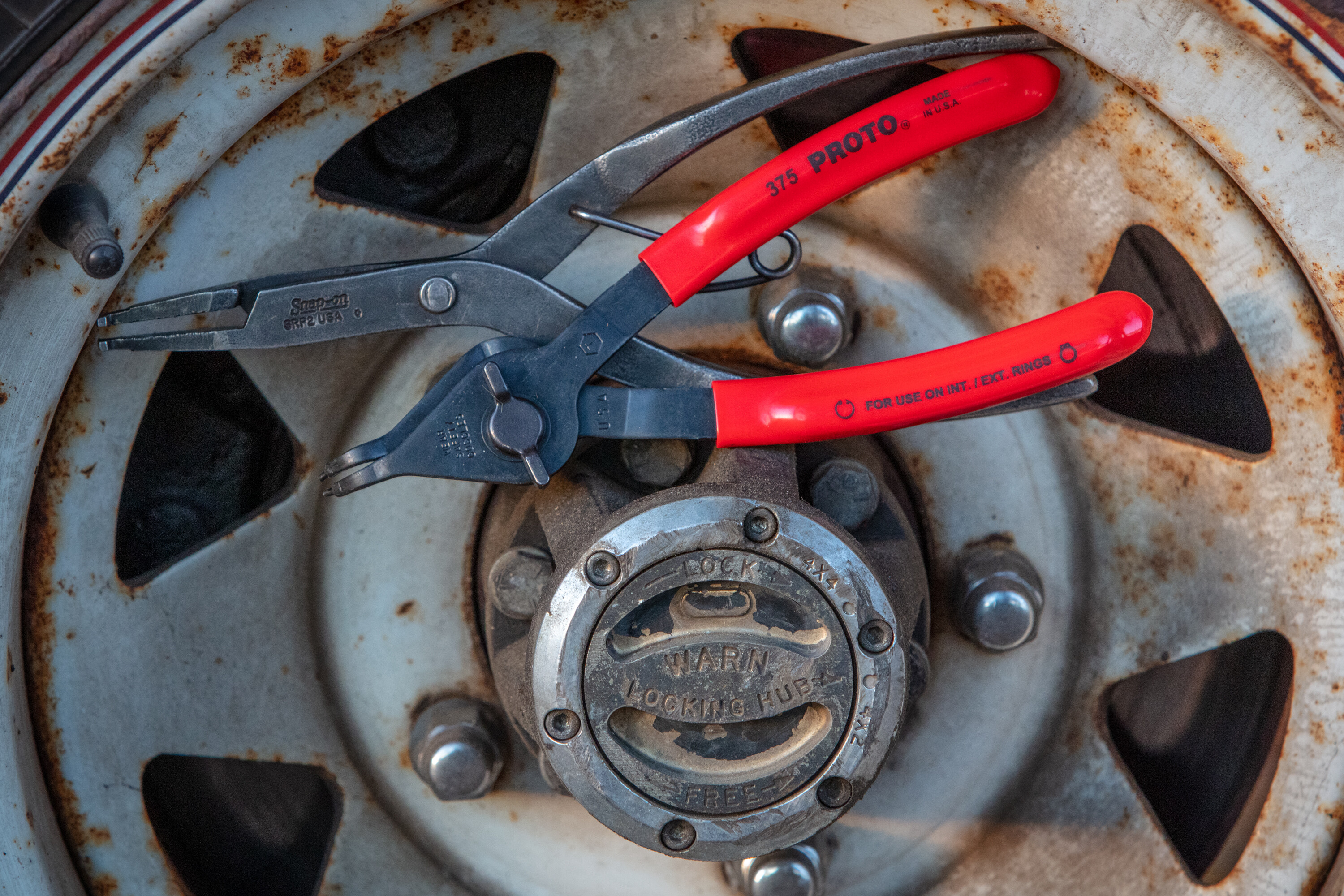
MOBILE FAB SHOP
If you are in this game long enough, the excrement will eventually hit the fan hard enough that you’ll need more than basic tools. In the same way we might carry a medical kit that exceeds our level of training, there is a good chance someone in your group is a first responder or has training in first aid. The same applies to your tool kit. Don’t know how to weld? Your friend might. If not, you will expand your skill set as many of us have by unadulterated oh-crap necessity.
You may not know it, but with two high-quality batteries, such as these Odyssey Group 35s, and a few accessories, you can travel with a mobile welding shop. The kit consists of two-gauge lug connectors, jumper cables, welding rod, wire brush, slag hammer and a compact shield. I made a weatherproof storage tube out of ABS pipe capped on both ends. Suggested rod: 6011 and 7014 in ⅛- and 3/32-inch diameter.
Corded tools are great if you have a large inverter, but you can’t beat the new crop of cordless products. My kit consists of a 20-volt DeWalt drill and cutoff wheel. A pair of batteries will get you through most jobs, and the A/C charger (0.7-amp load) will work on a 400-watt inverter or OE 115V receptacle. Don’t forget a quality bit set, step drill bit, wire wheels, bolt extractor set, and goggles.
When you need to clamp, cut, shape, or pull, the following are the heavy hitters of fab work. Hacksaw (standard and mini), C-clamps (3- and 8-inch), open-jaw Vice-Grips (x2), large Crescent wrench, dead-blow mallet, hammer, and metal files. Files should include medium machinist (double cut), half-round and keyhole (small and large). I also carry a universal gear/bearing puller.
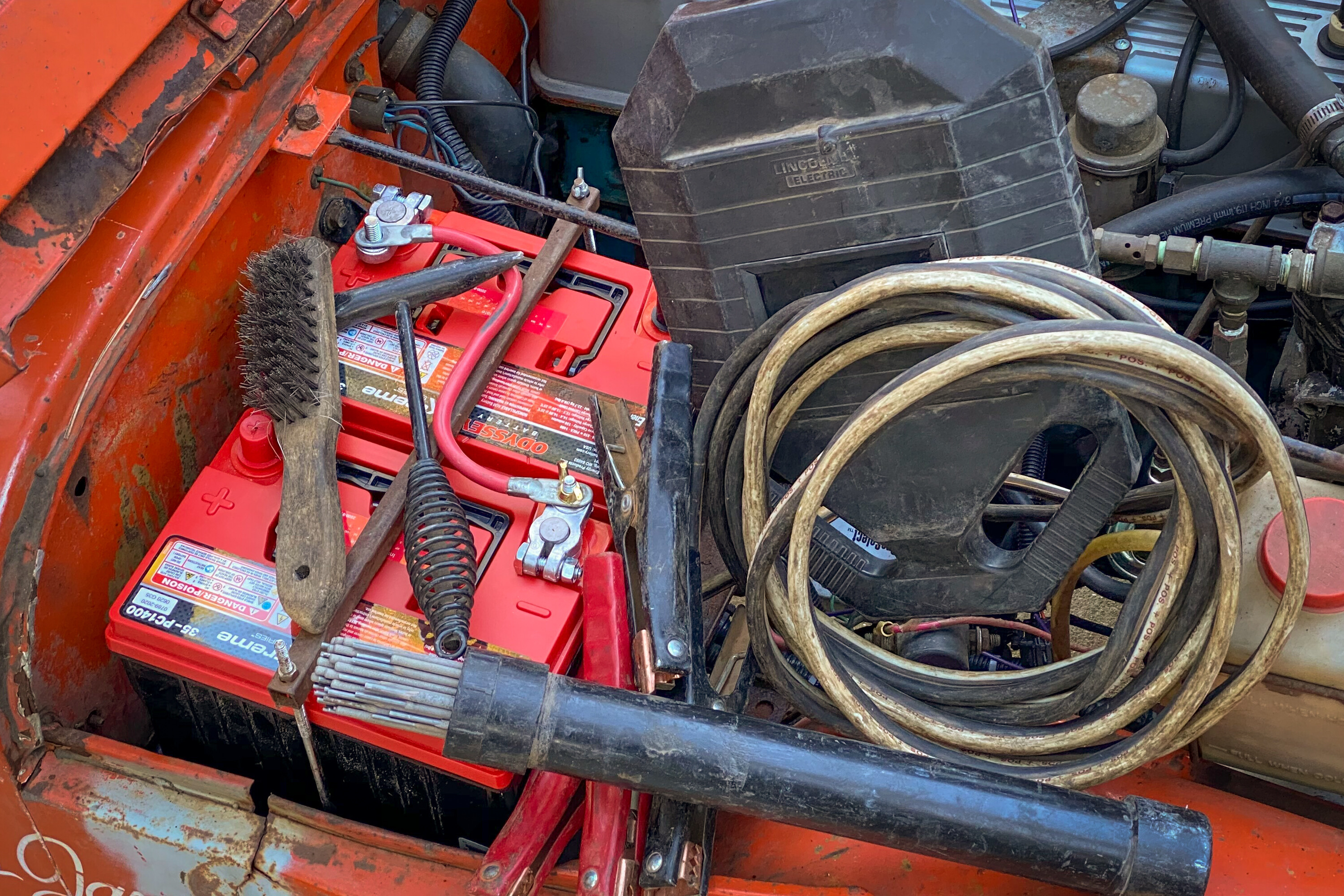
NEVER LEAVE HOME WITHOUT THIS TOOL
When 4X4 Australia editor Matt Raudonikis asked me about the one tool you shouldn’t leave home without, the answer was easy. Your brain. That day in the Andes my brain said, “What the hell are you doing in the middle of nowhere without your tools … idiot.” Granted, we’d consolidated tools to save space, but my brain was spot-on in its assessment.
However, if I had to pick a singular tool it would be my Leatherman. Paired with your brain, this compact pocket wizard will get you out of more jams that MacGyver on a good day. With Leatherman in-hand, we proceeded to remove the bonnet (for additional air flow), rerouted the fuel lines away from heat sources, checked the fuel filter, and adjusted the carb. Voilà! We were back on the trail.
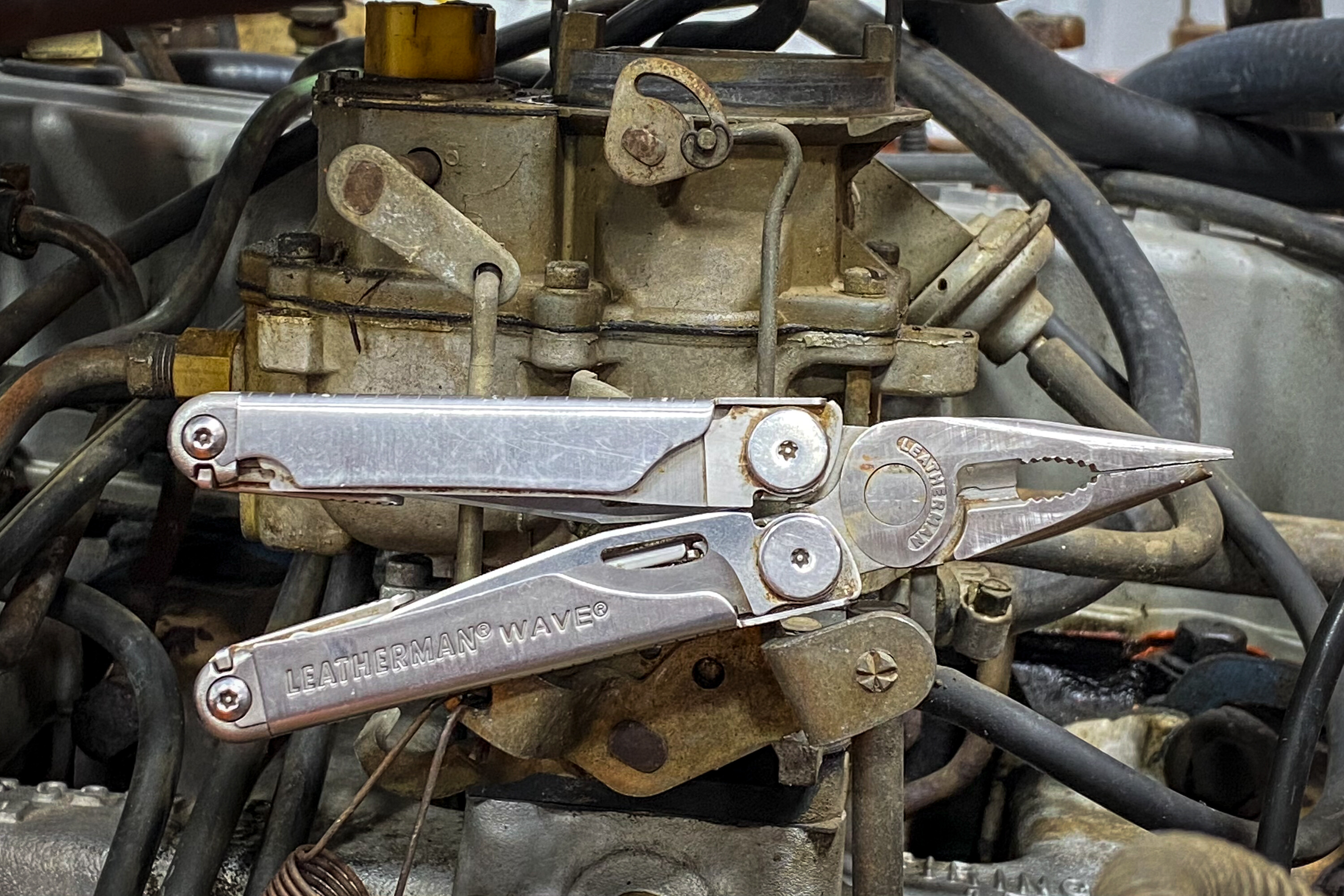
STORAGE OPTIONS
There are many schools of thought on the best methods for stowage: steel toolboxes, tool rolls, wrench rolls, ammo boxes and tool bags. I’ve found the two-box (or bag) method works best for my needs – a main box for heavy hitters and specialty items buried deep in my rig, and a quick-grab bag with the basics stored behind my seat.
Key features are durability, utility and transportability. Will handles or other components fail under the burden of heavy tools? Does it have multiple drawers, pockets, or sleeves to organise tools? Can you carry it up the trail if needed?
A few options that fit the bill in all three categories are Crescent’s Tradesman Tool Bag, the Yorktown Tool roll and Pouches from Atlas46, and Step22’s Pangolin Tool Roll. Look for a comprehensive review of these and other storage options in an upcoming issue of 4X4 Australia.
I’m impressed with Crescent’s new 17-inch Tradesman tool bag. It features dozens of sleeves for wrenches and pliers, two large sections for bulky stuff, and exterior PALS loops for expansion. Crafted with 1680 denier polyester, metal hardware, quality YKK zippers, and a rigid polypropylene base, this sturdy bag may replace my old (and heavy) machinist box.
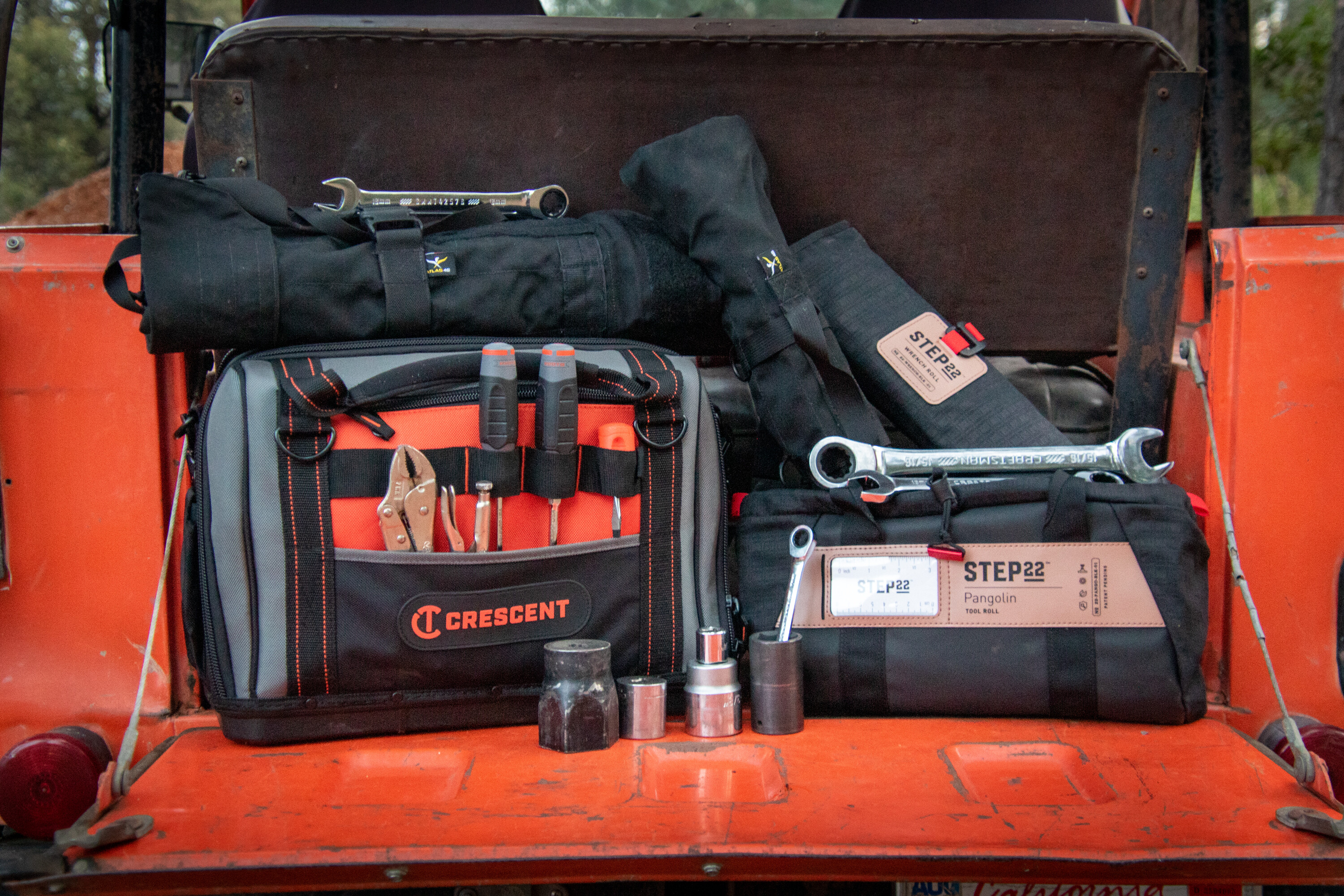
Founded in 1974, Atlas46 has forged a reputation for premium tactical gear for the military and law enforcement, all of which are handcrafted in the USA. The well-designed Yorktown, constructed with 1000 denier Cordura Nylon, is the quintessential tool roll and features four large pockets on one side and numerous tool slots on the back. Quality YKK zippers, Velcro closures, carry handles, and removable hanging straps makes this a great option for a quick-grab bag. Their Wrench Pouch is equal in construction and designed to hold up to 14 combination wrenches. Lifetime warranty, too.
Step22 cut its teeth making Hi-Lift jack covers before getting into storage options. Their Pangolin takes a modular approach to the tool roll. Two of its three large pockets can be removed, converting the end compartment into a catch-all garage. There are two clear-mesh pockets for small items, a removable 17-slot wrench roll, and compression-cord closure. Material is 1000 denier C.R.A.W.L. (coated rugged all-weather layer), zippers are YKK, and dual carry straps allow for quick grab-n-go.
We recommend
-
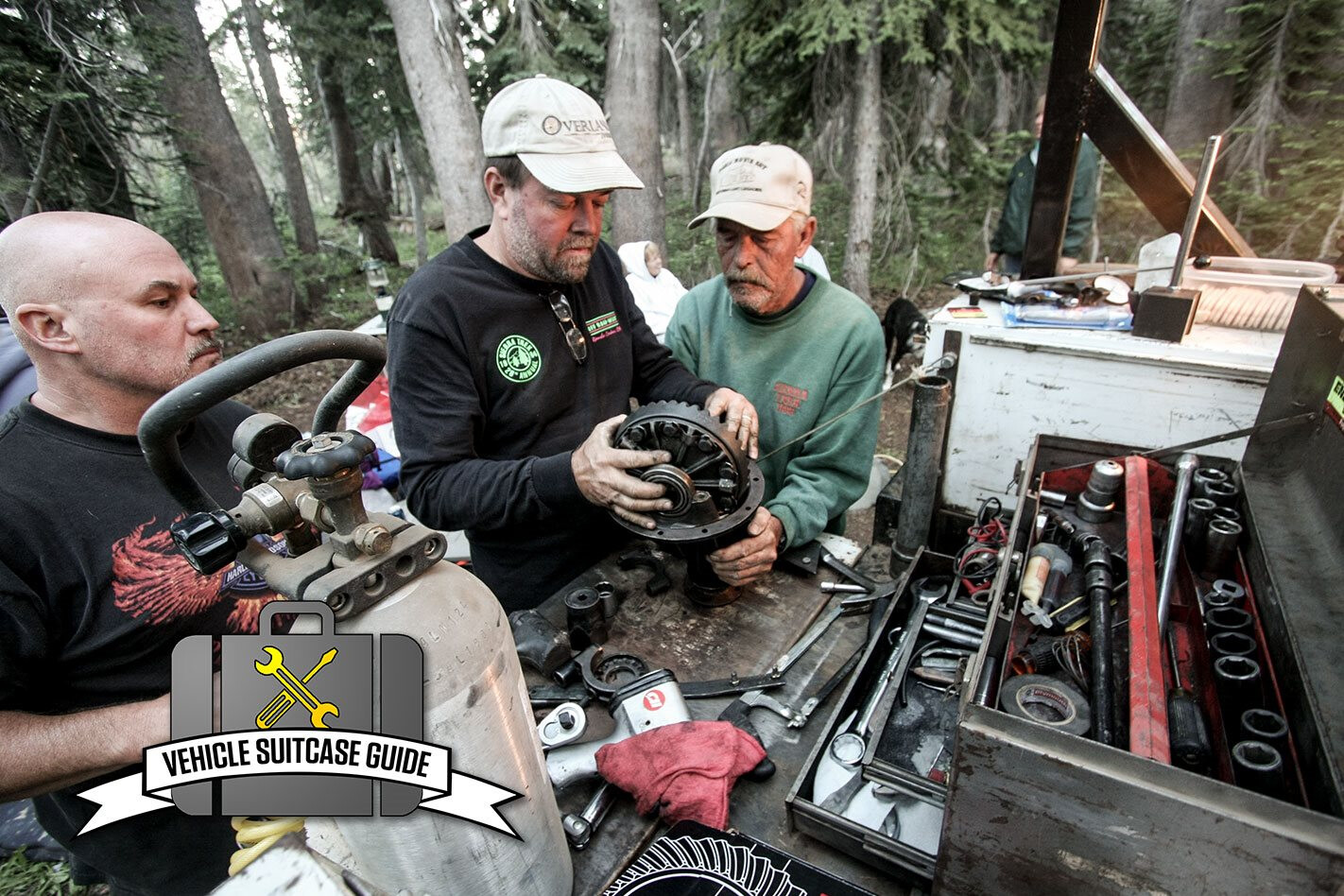 Gear
GearWhat to Pack For a 4x4 Trip: Pt 1
An essential guide to packing a suitcase to survive, when things go awry.
-
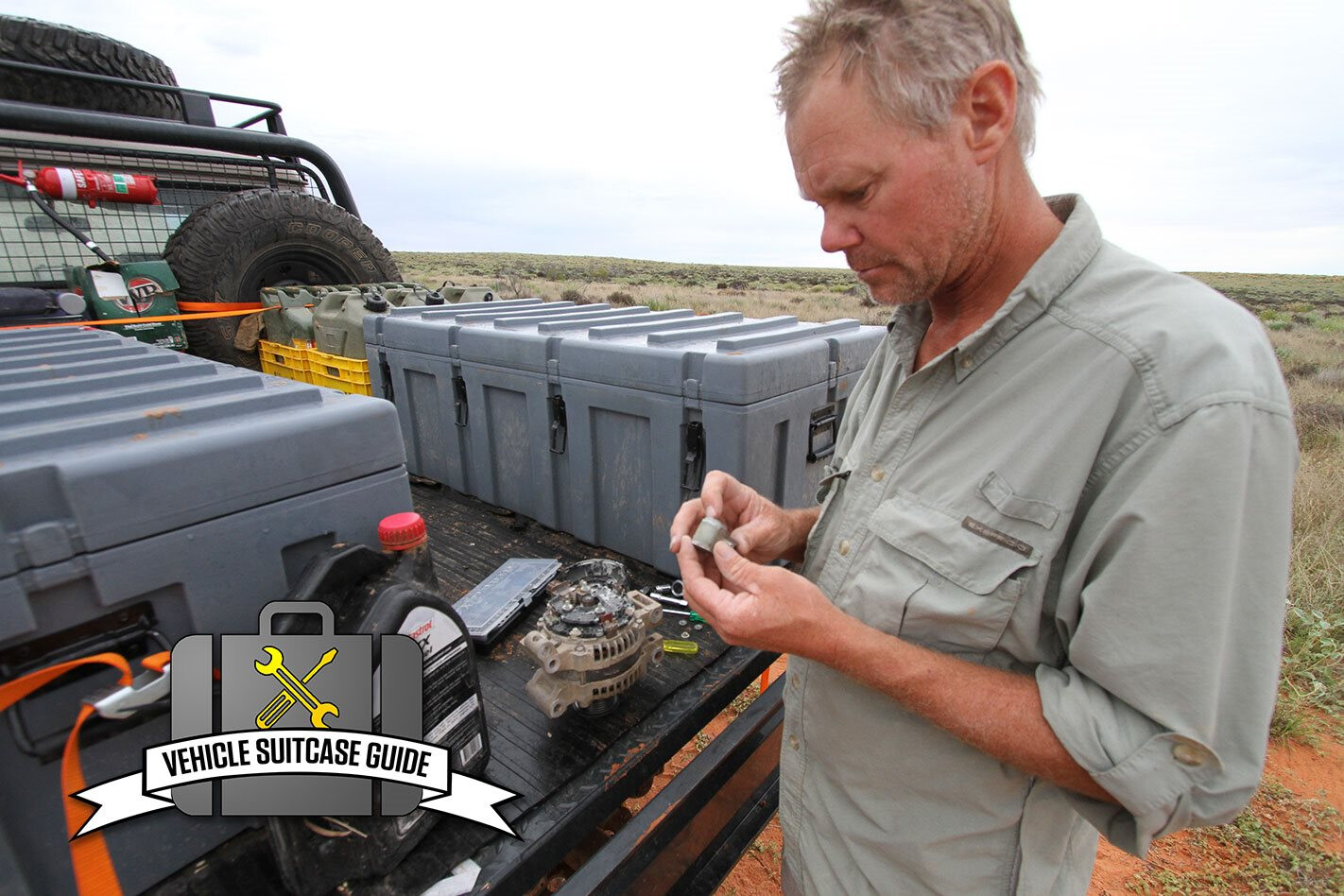 Gear
GearWhat to Pack For a 4x4 Trip: Pt 2
The second instalment in our guide covers basic tools, fluids, and spares for keeping your 4x4 running on the trail.
-
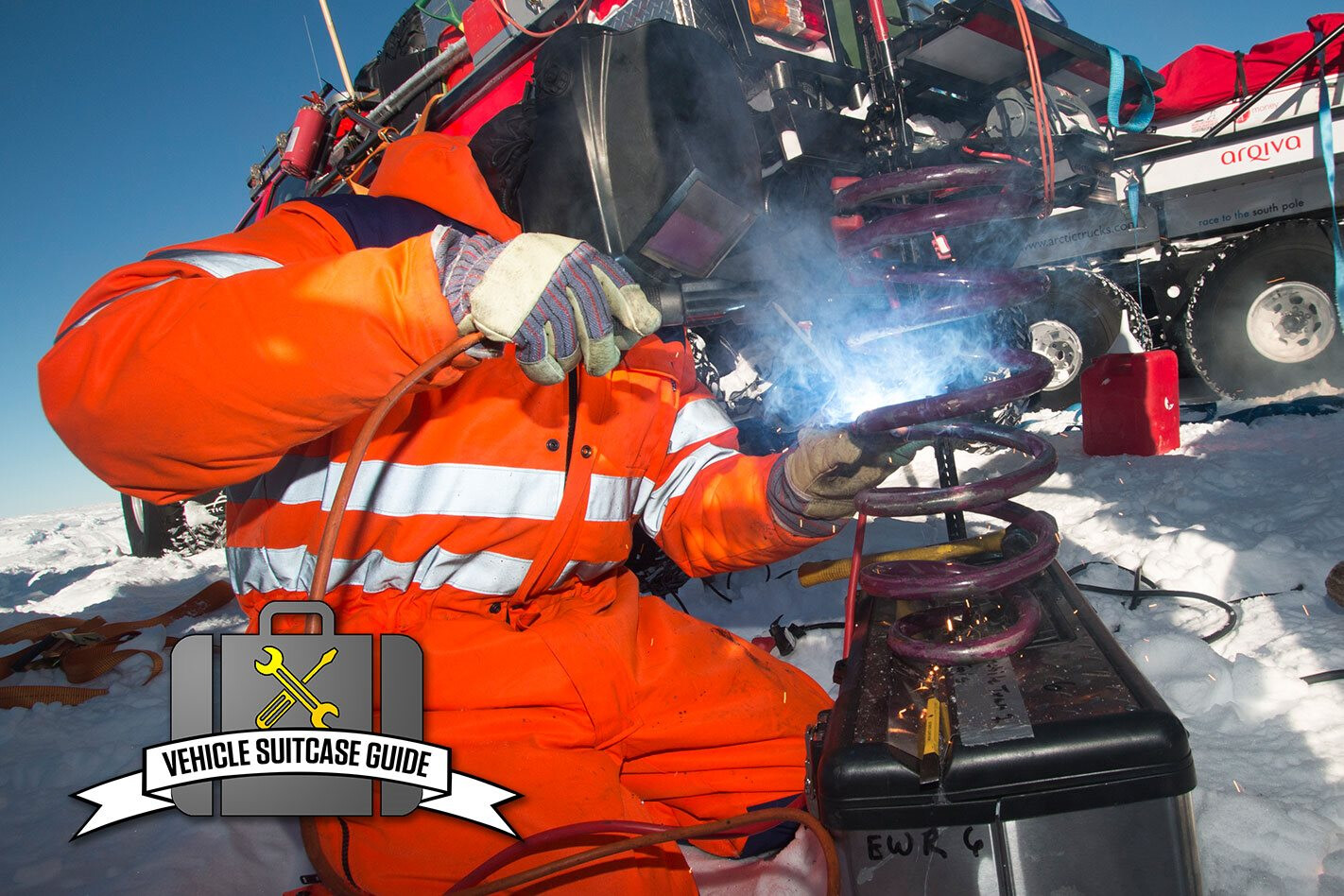 Gear
GearWhat to Pack For a 4x4 Trip: Pt 3
Speciality tools, and tyre repair and welding kits are life-saving tools that can save you from being stranded.

